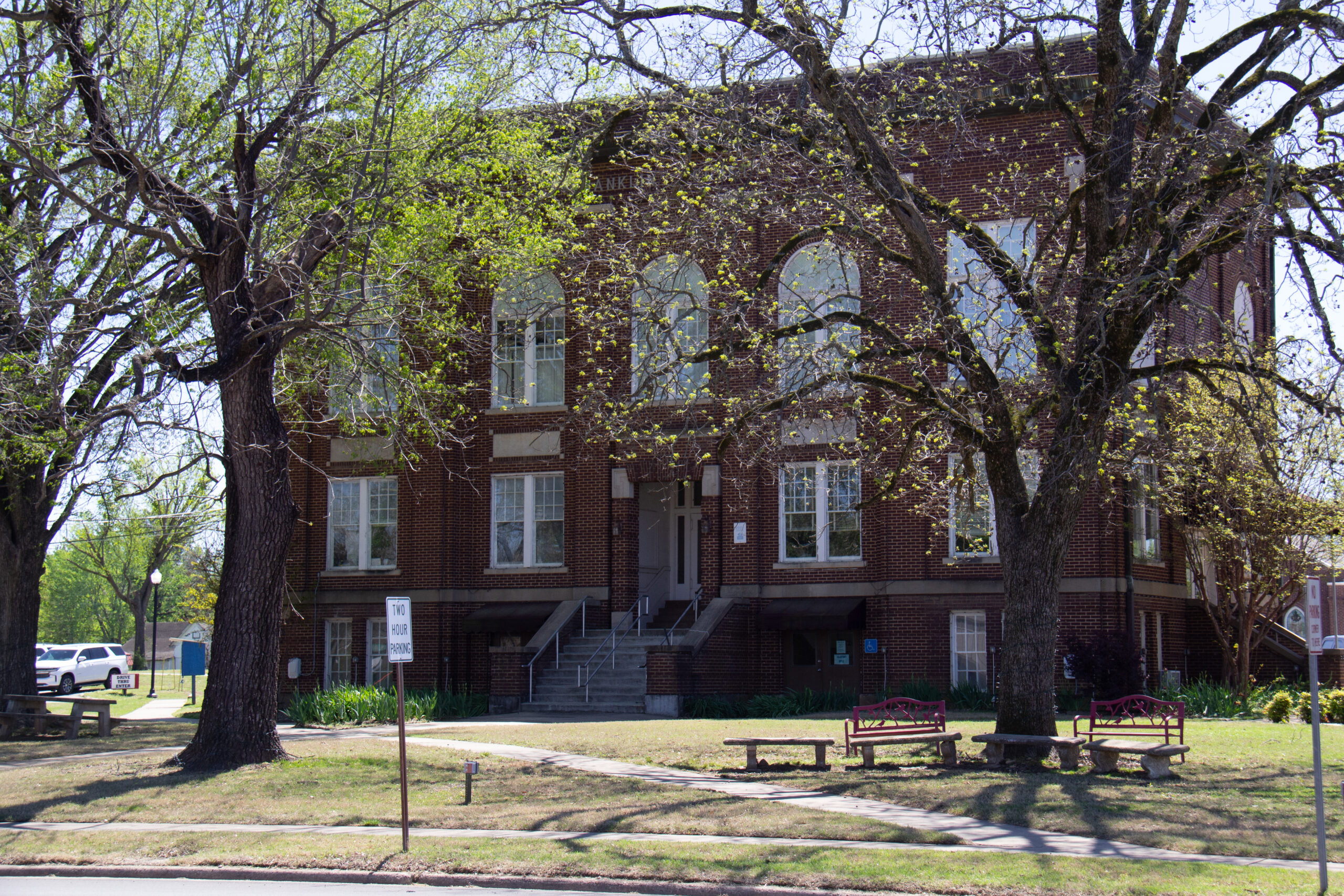If you spend even a little time perusing the history of our state’s cities and towns in the wonderful Encyclopedia of Arkansas, a pattern quickly emerges. Early Arkansas communities, particularly smaller ones that often began as little more than labor camps, grew and even thrived with the coming of the railroad. Of course it helped if industry had already developed around an area’s natural resources, whether it was agriculture, timber or, in the case of some south Arkansas cities, oil.
For Alma, Charleston and Prescott, which celebrate their sesquicentennials this year, and for Norphlet, which marks a century, that pattern holds true. To honor the milestones they’ve reached, let’s take a brief look at their histories.
Three from 1874
Located northeast of Fort Smith and Van Buren, Alma was founded on farmland and soon featured a cotton gin, drugstore, post office and a burgeoning timber business. A schoolhouse, public hall, church, Masonic lodge, saloon, hotel and other businesses soon followed. Even before its official incorporation in 1874, it was the second-largest community in Crawford County.
The growth ramped up with the 1876 arrival of the Little Rock and Fort Smith Railroad. The cotton and timber industries were early beneficiaries of the expanded transportation access. Fruit and vegetables like strawberries, spinach, beans and tomatoes also boosted the economy. It would ultimately be the green, leafy vegetable that would put Alma on the map, not necessarily because it grew well there, but because it was canned there.
Siloam Springs-based Allen Canning Company acquired the Popeye spinach brand in 1978 and canned over half the spinach consumed in the United States. Allen’s Alma cannery became the city’s leading business, and in 1987 the city named itself “The Spinach Capital of the World.”
Allen’s filed for bankruptcy in 2011 and its various divisions and assets have since been sold off. Fortunately, Alma’s economic base has diversified and the population has steadily increased over the years to nearly 6,000 today.
The Franklin County city of Charleston grew, not along a rail line, but along the Butterfield’s Overland Mail Company stagecoach line that connected Fort Smith and points west to Memphis in the east. Established in the 1840s by several settlers, including a plantation-owning county judge and a Freewill Baptist preacher from Massachusetts for whom it is named, Charleston was the home of numerous churches, a school and several businesses by the time of the Civil War, when the settlement became the site of significant guerilla warfare as troops from both the Confederacy and Union moved in the area.
January 14, 1863, was one such bloody day in the city. A band of jayhawking Union guerillas led by Colonel Martin D. Hart snuck into town with a list of prominent local men to kill. They were successful, until they weren’t. After killing two men, Hart and his officers were captured, taken to Fort Smith and hanged.
After the Civil War, the citizens of Charleston regrouped and rebuilt, officially incorporating in 1874. The Arkansas Central Railroad connected Charleston to Fort Smith in 1898, and it boosted the city’s economy, which was largely based on cotton. Ozark, which is in Franklin County north of the Arkansas River, had been named the county seat in 1838. In 1901 Charleston was named the second county seat, since it is south of the river and traversing it was difficult.
In the days following the U.S. Supreme Court’s ruling in Brown v. Board of Education of Topeka, Kansas, the Charleston school board voted to comply with the law and desegregate. It was the first city in Arkansas to do so, and it was accomplished largely without the turmoil that erupted in Hoxie and, most famously, Little Rock.
Charleston has grown steadily with each decennial census. With a population of 2,588 today, it is a bedroom community to Fort Smith and has easy access to the thriving northwest Arkansas region.
The Nevada County city of Prescott in southwest Arkansas is a railroad town to its core. When in the early 1870s the Cairo and Fulton Railroad built a line connecting Little Rock to Texarkana, the new city was quickly plated and its first buildings constructed within just a few weeks. By the end of 1873, the new city had a depot, several stores, a hotel and a post office. Early reports compared its rapid growth to an oil boom. Prescott was incorporated in October of 1874, and in 1877 the county seat was moved from the smaller Rosston to the rapidly growing rail town.
From the late 20th century and into the 21st, timber and agriculture provided good jobs in Prescott and the city continued to grow. The Great Depression caused a decline in population as many workers sought employment elsewhere. In the years after World War II, poultry and beef became more dominant in the local economy and the population ticked up again, reaching a high of 4,103 in 1980 before steadily declining to 3,101 as of the 2020 census.
Norphlet marks a century
Tucked into the piney woods just north of the regional hub of El Dorado, the Union County city of Norphlet was incorporated in October of 1924. Like its larger neighbor to the south, Norphlet benefitted from the region’s oil boom in the first half of the 20th century, reaching a population high of 1,063 in 1930. The boom also resulted in one of the state’s biggest oil-drilling disasters. In May of 1922, a rig dubbed J.T. Murphy No. 1 hit a pocket of natural gas that began spewing forth at a rate estimated at 65-75 cubic feet of gas per day. The gas caught fire, causing a series of explosions that sent flames 300 feet up, destroyed the oil derrick, and showered a 10-mile radius in shale fragments. It created a crater 450 feet in diameter. Though it is now filled with water and inaccessible to the public, the Murphy No. 1 Crater is listed on the National Register of Historic Places.
While oil continues to be an important part of the local economy, Norphlet, with a population of 766, is largely a bedroom community of El Dorado. It features several churches, a branch of the Bank of Smackover, and a few retail and food options.
To learn more about the history of Arkansas’ cities and towns and the people that make them special, visit the always expanding Encyclopedia of Arkansas at encyclopediaofarkansas.net, a project of the Central Arkansas Library System.














